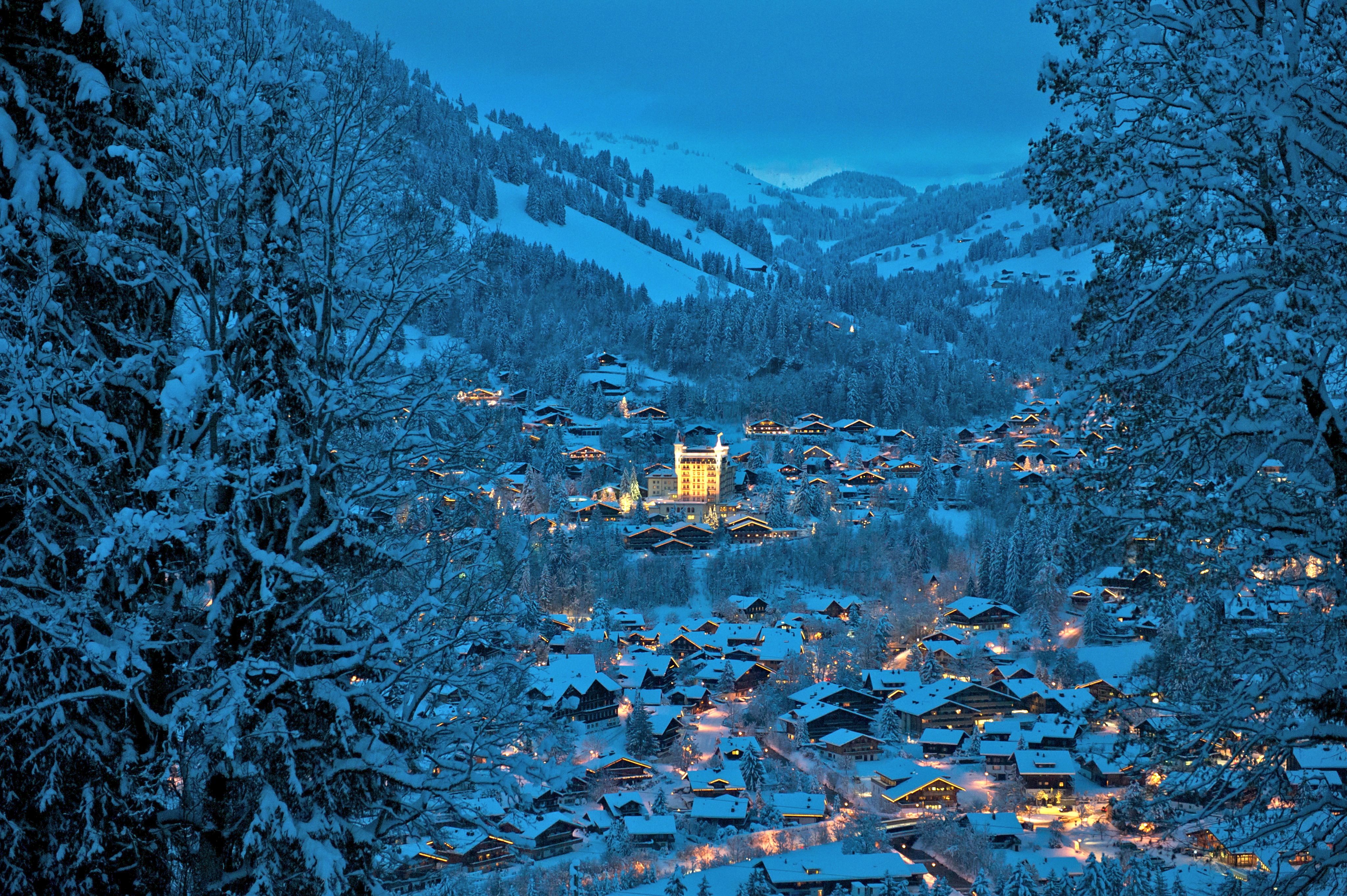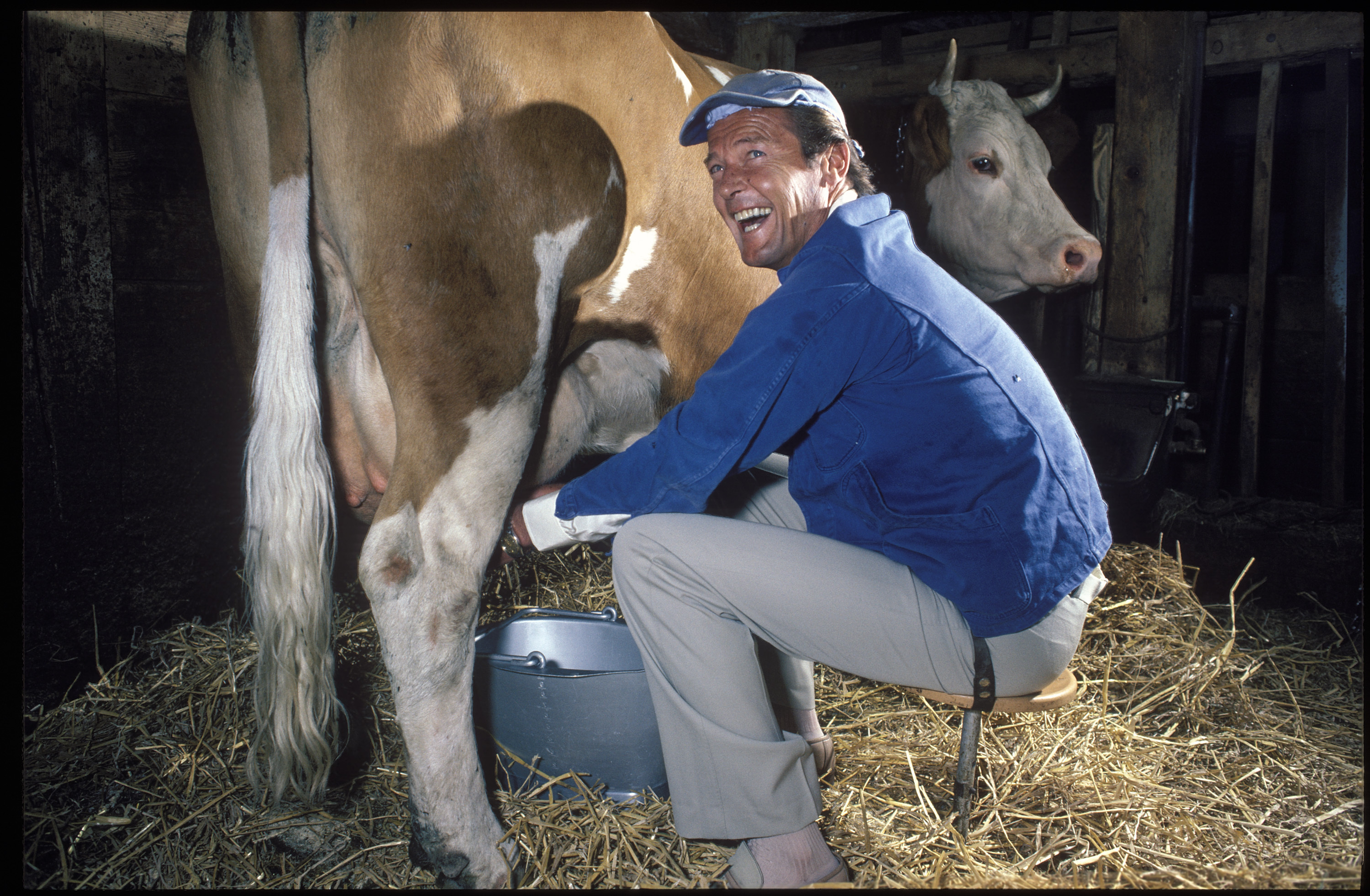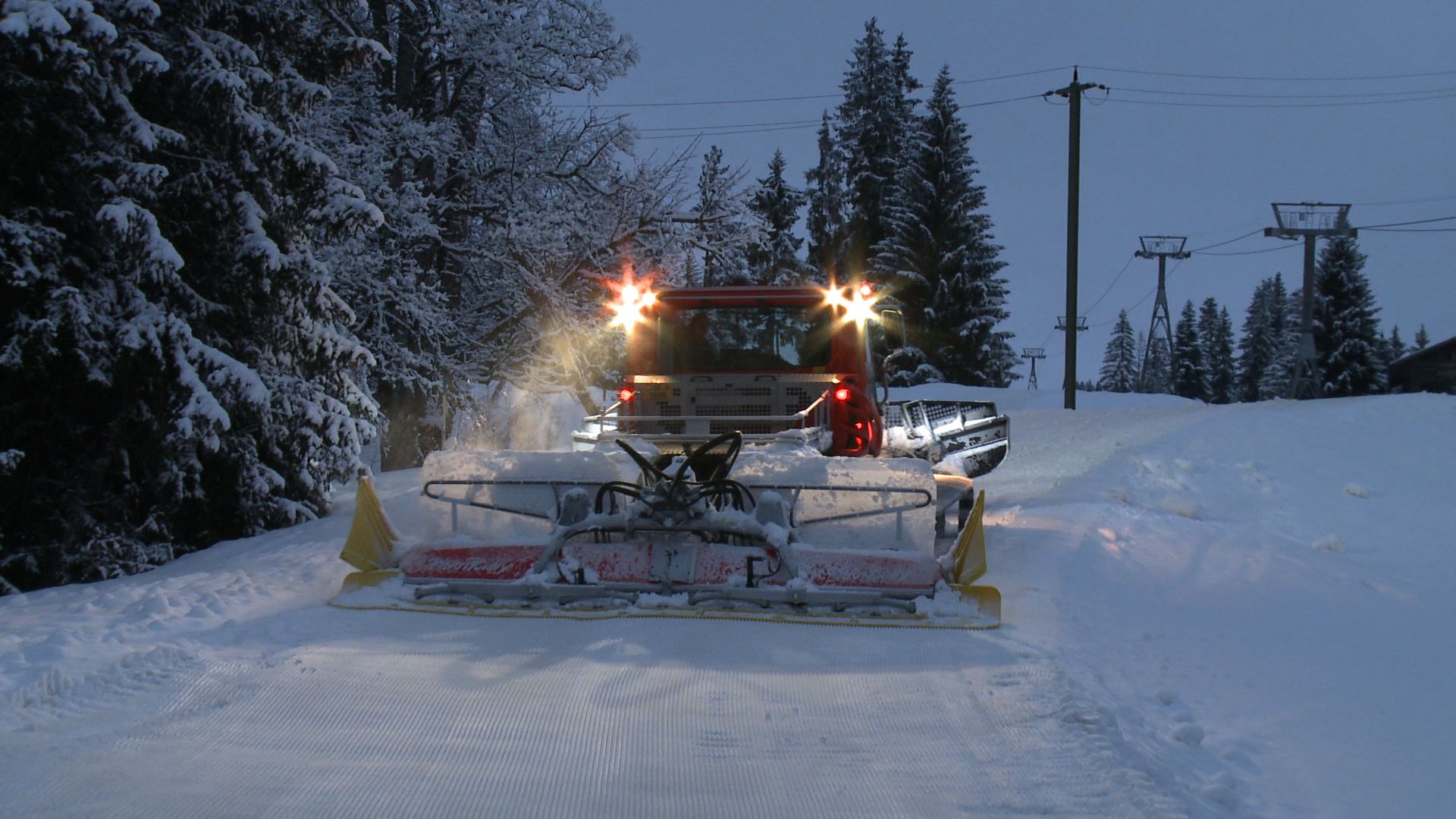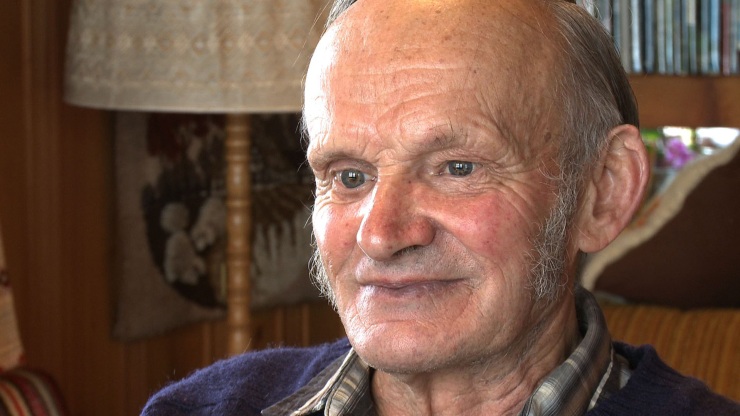Wealth threatens the simple life in Gstaad

Whether celebrity or ordinary guest, lord of the manor, property tycoon or ski instructor, farmer or priest, all agree that Gstaad is paradise. But special interests threaten the "Alpine Garden of Eden". The simple life, which guests love so much, is under threat.
“I’m in heaven! Lucky Me,” posted Madonna at the beginning of the year during her vacation in Gstaad. The pop icon is just one of many celebrities who feel comfortable in the famous winter resort. Not only Madonna, but French singer Johnny Hallyday and his friend, film director Roman Polanski, have bought chalets in Gstaad for several million francs.
About 180 foreigners are taxed there at a lump sum rate and they include the British actress Julie Andrews, who 20 years ago described the ritzy resort as the “last paradise in a crazy world”.
Alpina guests
“Without a doubt, it’s paradise,” say Judy Smith, Debbie and Victoria Swann in unison. The Australians have something to compare it with. In previous years, they have spent their winter holidays in ski resorts at home as well as in Canada and Italy. “It was always chaotic but here it’s peaceful, like on a postcard.”
The women, who are widely travelled, haven’t come to Gstaad for the skiing. It’s the lack of hustle and bustle, which appeals. They appreciate the celebrated resort’s quieter side: a comfortable life in alpine surroundings. They are guests in the Alpina, the newest luxury hotel in Gstaad.
“Nice staff, first class restaurants, beautiful rooms” which house, for example, television equipment worth CHF25,000 ($27,700). In 2013, less than a year after its opening, the CHF300 million project was nominated Gault Millau’s Hotel of the Year.
On a grey afternoon in January, it does not feel hectic at all. The T-bars of the practice lift spin around. The only person using it is Célia Dessarzin.
The young woman from Geneva works as a florist in Gstaad during the winter season and does a few runs during her lunch break. Today she has to make do with the beginners slope, because the gondola to the Wispile – one of Gstaad’s local mountains 1,900 metres above sea level – is not running.

More
The rich and famous who brought fame to Gstaad
Ski instructor
A few instructors are the only guests in the snow bar at the bottom of the slope. Because there are not enough clients at the moment, they are spending their afternoons teaching local children at favourable rates. The instructors are also full of praise for the resort’s beautiful landscape and modern infrastructure.
Asked repeatedly whether the resort has any problems, Jos Zumstein eventually complains about the dead period in January. Because most chalet owners only come during the holidays, the winter high season is limited to a few days around New Year and the months of February and March.
The operator of the regional Saanenland cable cars, Mountain Rides, has had a tough time these past ten years, says Jan Brand, who was born here and is now the head of Gstaad’s ski school.
“Drastic measures are needed because they no longer meet the requirements of the guests,” says Brand, who can deploy up to 150 instructors at peak times.
Railways director
You only need to look at the company’s latest financial report to see that Mountain Rides is going through a rough patch.
“Insufficient liquidity, low profitability, high capital requirement, high debt.” That’s a brief summary of the findings of the last financial analysis.
Director Armon Cantieni tries to explain the difficulties: “There’s a cable car running on almost every mountain in the vicinity. But individual lifts aren’t being used enough because so few day trippers come to Gstaad.”
The offer has to be streamlined, says Cantieni without confirming the rumours that could mean the closure of the cable cars on the Wispile and Rellerli as a first step. Wealthy guests in particular, many of whom don’t ski, really appreciate the comfortable ride to lunch on Gstaad’s local mountain.
The director of the mountain railways would also like to cut the high level of compensation paid to owners of the land where the ski lifts stand and the runs are laid out. Today, these amount to CHF1 million per year or 5.8% income.
“This is more than twice the average in Switzerland,” points out Cantieni, who knows full well that the proposal won’t win him any friends in Saanenland.

More
The cost of making Gstaad skiable
In recent years, one rescue package after another has been proposed but private interests have generally scuppered them. Even the latest plan needs reworking, it says in the annual report.
Property tycoon
There is no lack of money in Saanenland to revamp the mountain railways. If the wealthy commune doesn’t want to pay, a private investor will certainly turn up. It would not be the first time.
“I run the Glacier 3000 ski area with two friends,” says Marcel Bach. The scion of an old-established farming family – locals call him the king of Gstaad – has earned his wealth through real estate.
In 2005, together with Formula One boss Bernie Ecclestone and the agro-industrialist Jean-Claude Mimran, he bought some of the lifts in neighbouring Les Diablerets and renovated them. Bach and Mimram also made international headlines with the construction of the Alpina hotel.
What the guests in Gstaad really like is the quality of life, believes Bach.
The cultural and sports facilities, modern infrastructure, the short distances and the nature. “We have taken care of the region and avoided the excesses of places like Crans-Montana and St Moritz thanks to strict building regulations,” says the real estate agent.
Bach does not accept the criticism that huge demand by rich people has driven land and house prices in Gstaad sky high and forced out the less wealthy.
“That was a big problem two or three years ago but it has corrected itself now. The community has built many homes for first-time buyers and many private people rent at favourable rates. I know of a three-room apartment for CHF1,500 per month which was without a tenant for six months,” he says.
Displaced
Among those who have been driven out of “paradise” is Klara Weibel, who grew up in Gstaad. There, she met Bruno, her future husband, who works as a machine operator in the Saanenland region.
For 14 years, the couple lived with their children in low-priced accommodation in an old Gstaad farmhouse. But in 2009 the owners had new flats built with rents of CHF1,800 plus costs – a sum that the family could not afford.
“For eight months, we looked in vain for a cheaper apartment in Saanenland.”
For the past five years, the family has been living in Zweisimmen, 15 kilometres away. Since then, Bruno has been one of the many commuters whose cars clog the roads in the region.
Lord of the manor
“There have been too many chalets. We are suffering in Gstaad from selling off our homeland,” says Andrea Scherz regretfully in the lounge of the Gstaad Palace, which has been perched above the village for 100 years like a fairy-tale castle.
Like his father and grandfather he pampers the rich and influential from around the world. Scherz and his team know the guests personally and many clients know each other.
The atmosphere is very relaxed, says the lord of the manor, who sometimes refers to his kingdom as a “small country” because the Palace has everything: restaurants, bar, spa, hairdresser…
Scherz is convinced that the prominent clientele not only loves the luxury of Gstaad and “the lovely alpine landscape but also the proximity to ordinary people.”
“This authenticity is being lost,” he complains.
“In the past, the centre of the village had a butcher’s, a grocery store, a flower shop, a hardware store, where even the farmers turned up.
“Today it’s Gstaad’s most famous street, where the luxury boutiques, which stand next to expensive restaurants, are almost completely empty on some days. There is nothing there for locals anymore,” says Scherz.
“Gucci, Hermes or Prada are not stores for daily shopping.”
In order to offer his guests a bit of traditional Gstaad, Scherz has rented a mountain hut higher up and equipped it in a fairly rudimentary fashion for just CHF50,000.
“It has an earth closet, only cold water, no internet and poor cell phone reception. An absolute hit,” the Palace director says enthusiastically. “Some guests fling their arms around my neck”, apparently out of sheer gratitude for the stage-managed experience in the natural landscape.
Farmer and ski lift employee
Fritz Müllener’s land is outside the building zone. The organic farmer has not sold a single square metre of his land but only ever used it for agricultural purposes.
In his biography, E Blick zrugg, written in dialect, the native of Gstaad has described what enriches his life.

More
Farmer tells of changing world
His eldest son and his wife have now taken over the farm. Even at the Mülleners, goats have long given way to motor mowers.
“Instead of using horses, sledges and nailed shoes, today’s farmers are out and about with a van, jeep or Subaru,” Fritz Müllener wrote in his book.
Pastor
When she looks through the window of the rectory at the snow-covered landscape in the morning, Andrea Aebi, also feels as if she is in the Garden of Eden.
The young pastor has only been working in the Reformed parish of Saanen-Gstaad since the summer of 2013.
In her church, billionaires sometimes rub shoulders with locals, who have to make do with very little money. Is that also what paradise is about? “I don’t imagine it like that but rather more equal,” says Aebi.
“I have also wondered what life is like with so much money. Wealth is very discreet here. But I realise that these people are welcome because they stay, shop and take part in leisure activities. There are many people in Gstaad who work for the wealthy and rely on it.”
Recently, a craftsman asked the pastor if he should accept money from the super-rich. “Nearly all of us are involved in it, and I would not like to judge who are the better Christians,” says Aebi.
Her parish doesn’t just include wealthy Gstaad but also, for example, the remote village of Abländschen behind the Jaun Pass.
As part of her church classes, Aebi organised a trip to the Swiss capital Bern this autumn with some local 14-year-old students. For some of them it was the first time in their lives they had left Saanenland, says the pastor.
Institute director
The internationally renowned Institut Le Rosey is cosmopolitan. The elite boarding school in Rolle on Lake Geneva is nearly 100-years-old.
Every winter its 400 pupils and 200 professors and support staff move quarters for ten weeks into the school’s own chalets in Gstaad, where culture and sport supplement the educational programme.
On average, three and a half candidates from over 60 countries apply for every place at the school, although the fees are CHF100,000 a year.
“We are the privileged among the privileged,” says director Philippe Gudin and he could also be referring to the gentle mountain landscape in which he and his colleagues teach and supervise.
“In Gstaad, the school is always welcome. It’s a love story,” he commented on the relationship between the ritzy resort and the school.
The local tourist office has calculated that more than 50% of holidaymakers in Gstaad have some sort of connection to Rosey.
Little wonder given that every year, between 80 and 100 new pupils join the boarding school, and many well-heeled parents discover the holiday destination because they come to visit their offspring at their winter campus.
Describing the institute as elite is no exaggeration. Long indeed is the list of former students who have achieved something in life.
Flush with success, many return on holiday to the place where they had unique experiences and friendships. For decades, Le Rosey has guaranteed Gstaad future generations of VIPs.
The world famous ski resort is 1,000 metres above sea level.
More than 53 cable cars (14 gondolas, 17 chair lifts and 22 ski lifts) lead to almost every mountain in the Saanenland region and make 220 kilometres of slopes accessible between Zweisimmen and Château d’Oex. Most lifts run from December to early April thanks to artificial snow.
Most of the ski area lies in forested foothills and has a lot of “blue and red” slopes, which are particularly appreciated by families and less experienced skiers.
The highest point of the ski area is the Videmanette above Rougemont at 2,150 metres.
Twenty minutes away by car are the Glacier 3000 cable cars above Les Diablerets, where winter sports are possible from late October to May.
(Translated from German by Vincent Landon)

In compliance with the JTI standards
More: SWI swissinfo.ch certified by the Journalism Trust Initiative










You can find an overview of ongoing debates with our journalists here . Please join us!
If you want to start a conversation about a topic raised in this article or want to report factual errors, email us at english@swissinfo.ch.